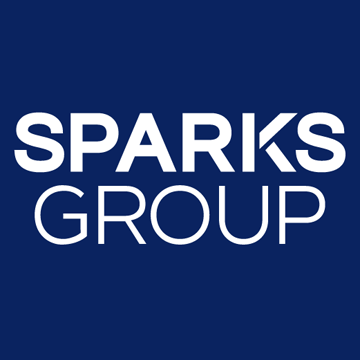
A record 4.4 million U.S. workers quit their jobs in September, an increase from 4.3 million in August, continuing the ongoing employment trend known as “Great Resignation.”1 There are an estimated 10.4 million job openings nationally, and many employers are struggling to retain their staff and fill open positions.2
Looking into the numbers a little closer, the resignation rate for total non-farm jobs hit a 20-year high of 2.9% this year.3 The highest quits rate increase was among 30- to 45-year-old workers with a 20% climb from 2020 to 2021.4 When broken down by industry, resignations were highest in the tech (4.5% increase) and healthcare (3.6% increase) industries during the same timeframe.5
The Great Resignation has significantly shifted the hiring market. While employers used to have more time to evaluate candidates, now they risk losing out on top talent to a competitor if they take more than 24 hours to make an offer. Also, some employers are offering skilled professionals attractive signing bonuses, better pay, and lucrative bonuses to leave their current job to work for them. This trend isn’t just with contract or temporary jobs, either — it’s also prevalent with permanent roles.
Why Are People Leaving Their Jobs?
The COVID-19 pandemic and shift to remote work have influenced employee retention and worker expectations for their jobs. Why a particular worker leaves to join another company or position will vary widely from person to person; however, there are several shared reasons:
- “Turnover Shock” - The pandemic caused some people to reflect more about their overall job satisfaction and career, prompting some to leave and work at different organizations or within different industries.6
- Lack of Work From Home (WFH) Option - The shift to remote work has caused the majority of employees to ask for the ability to WFH. One recent survey by Owl Labs found that 92% of people expect to work from home at least one day per week, and 80% expect to work at least 3 days from home per week.7 People left without a WFH option may quit their jobs to find another with more flexible work options.
- Early Retirement - In the third quarter of 2020, 28.6 million Baby Boomers left the job market and retired, partially due to the pandemic.8 Now, approximately 2.7 million Americans aged 55 or older said they are considering retirement earlier than they originally planned due to the pandemic,9 with the number of people expecting to work beyond age 67 fell to a record low of 32.4% in July 2021.10 This trend has continued for several months, indicating a new shift in mindset for older workers.
How Do Federal Vaccination Mandates Contribute to Turnover?
Another major factor contributing to the Great Resignation is the requirement for employers to ensure their employees are fully vaccinated against COVID-19.
On November 4, 2021, the Biden administration announced a new federal rule requiring companies with 100 or more employees to fully vaccinate their employees against COVID-19 by January 4, 2022, or require unvaccinated workers to produce a negative test every week. The White House estimates this requirement will affect an estimated 84 million Americans, which will drive some workers to leave their jobs or look for employment elsewhere if they do not wish to comply.
While the vaccination and testing requirement will begin after January 4, 2021, employers with 100 or more workers must require masks for the unvaccinated, pay employees for the time it takes to get their COVID shot, and decide whether they will require vaccinations or weekly tests by December 5.
Vaccination Requirement for Federal Contractors
On the federal level, contractors will soon be required to get vaccinated without the option of testing for most employees. On September 9, 2021, President Biden issued an executive order requiring all federal contractors to be fully vaccinated against COVID-19 by December 8, 2021.11 However, with the announcement of the federal requirement for employers, the administration pushed the federal contractor deadline to January 4.12 Employees with a valid excuse can opt for regular testing instead. Employers who don’t comply with the requirement can be fined up to $14,000 per violation.13
This mandate is especially influential within the greater D.C. area, where a high percentage of organizations receive federal funds, including government contractors, nonprofits, and state and local governments. The requirement means that employers will have to take the time to audit their employees and determine who is vaccinated and who would need to be by the deadline. The requirement is causing workers who don’t wish to get the vaccine to look for other employment, causing the additional turnover.
What Can Employers Do to Better Retain and Attract Workers?
To combat turnover, businesses should evaluate potential shortcomings within their work environment and company culture, and expedite the interview process to not miss out on skilled candidates to fill any openings.
Identify and Address Burnout Causes
The first step to addressing turnover is to identify controllable factors that are contributing to employee burnout. This can include benefits, pay, workload, and company culture, to name a few.
With a remote workforce, reasons for turnover can include feeling less connected to their coworkers, a lack of scheduled social events and the feeling like workers are always on the clock or can’t unplug while at home.
Read More: How Employers Can Help Remote Workers Mitigate Work From Home Fatigue
Employers can conduct exit interviews to ask departing employees why they decided to look for employment elsewhere and compile this data to look for patterns. By using this data and other insights, businesses can identify problem areas and address them to prevent more exits.
Offer WFH Flexibility
An August 2021 Bankrate survey found that 56% of U.S. workers said adjustable working hours and remote work were a priority in their job search.14 To prevent job-seekers from being discouraged and current employees from quitting, consider offering flexible WFH options. One strategy is to survey employees about their preferences for remote versus in-person work. Once everyone has filled it out, analyze those responses and craft guidelines that address employer and employee needs.
Streamline the Interview Process
The hiring market has shifted dramatically in recent months — how employers market their open positions and how quickly they get applicants into the interview process are more important than ever.
Recruitment timelines have greatly accelerated. In years past, employers or hiring teams could give candidates two or three weeks to sit with a job offer. Now, businesses that take more than one day to decide on a candidate will likely lose that worker to a counteroffer at another organization. Losing a candidate to a counteroffer not only means the company loses out on a skilled candidate, it also means that they have to restart the lengthy recruitment process to schedule, interview, and evaluate other applicants.
Look for ways to automate your interview process, such as by pre-screening candidates with pre-recorded video interviews or using a candidate relationship management system to automate more tedious hiring tasks. Make sure the recruitment team is prepared to efficiently evaluate any interviewed candidate to decide by the end of the day whether they should receive a follow-up interview or job offer before they find employment elsewhere.
Read More: 5 Recruiting Process Tips For Hiring Top Talent
Are you struggling to retain workers or fill open positions? Or are you a government organization in the D.C. area needing help complying with the vaccine mandate? Reach out to Sparks Group today and we can discuss your hiring needs and can provide the assistance and resources your company needs to find and retain top talent.
Sources:
-
- https://www.bls.gov/news.release/jolts.nr0.htm
- https://www.cnbc.com/2021/10/12/a-record-4point3-million-workers-quit-their-jobs-in-august-led-by-food-and-retail-industries.html
- https://www.bls.gov/opub/ted/2021/quits-rate-of-2-9-percent-in-august-2021-an-all-time-high.htm
- https://hbr.org/2021/09/who-is-driving-the-great-resignation
- https://hbr.org/2021/09/who-is-driving-the-great-resignation
- https://fortune.com/2021/09/07/everyone-quitting-their-jobs-right-now-2021-covid-great-resignation/
- https://www.apollotechnical.com/statistics-on-remote-workers/
- https://www.pewresearch.org/fact-tank/2020/11/09/the-pace-of-boomer-retirements-has-accelerated-in-the-past-year/
- https://www.bloomberg.com/news/articles/2021-04-30/more-americans-are-considering-retirement-because-of-covid
- https://www.businessinsider.com/new-retirement-age-labor-market-great-resignation-boomers-golden-decade-2021-9
- https://www.whitehouse.gov/briefing-room/presidential-actions/2021/09/09/executive-order-on-ensuring-adequate-covid-safety-protocols-for-federal-contractors/
- https://www.whitehouse.gov/briefing-room/statements-releases/2021/11/04/fact-sheet-biden-administration-announces-details-of-two-major-vaccination-policies/
- https://www.shrm.org/resourcesandtools/hr-topics/talent-acquisition/pages/federal-vaccine-mandate.aspx
- https://www.bankrate.com/personal-finance/job-seekers-survey-august-2021/






